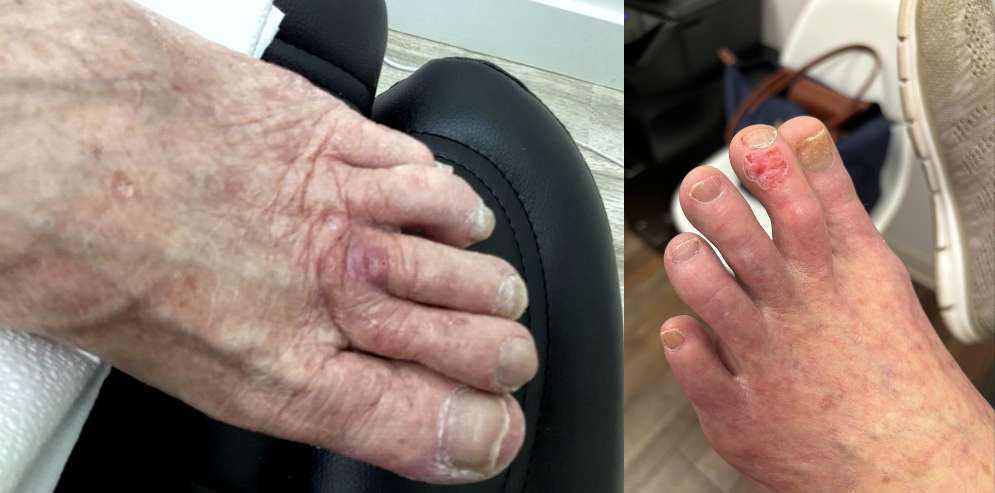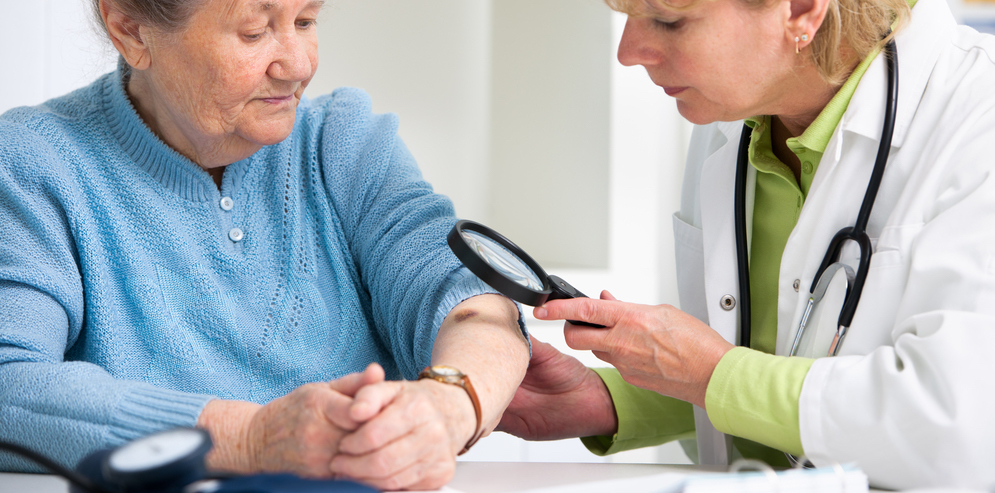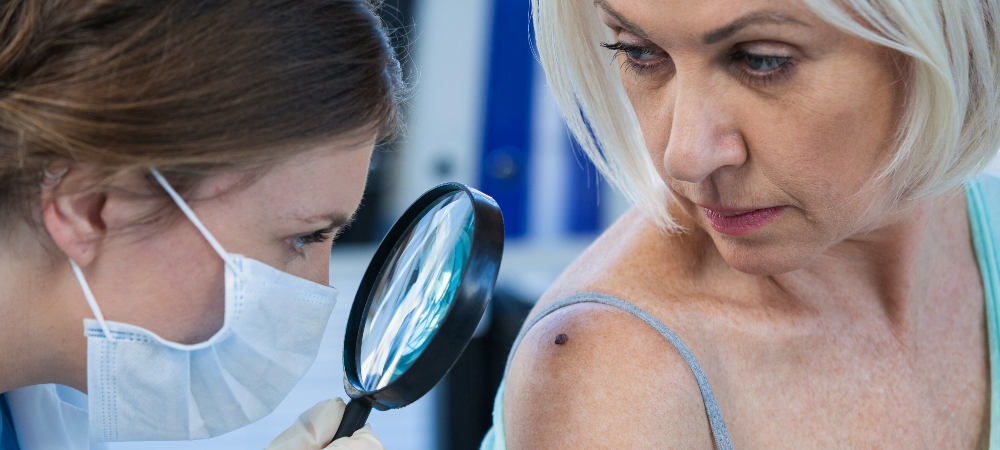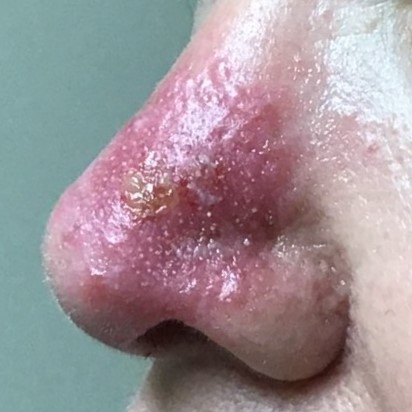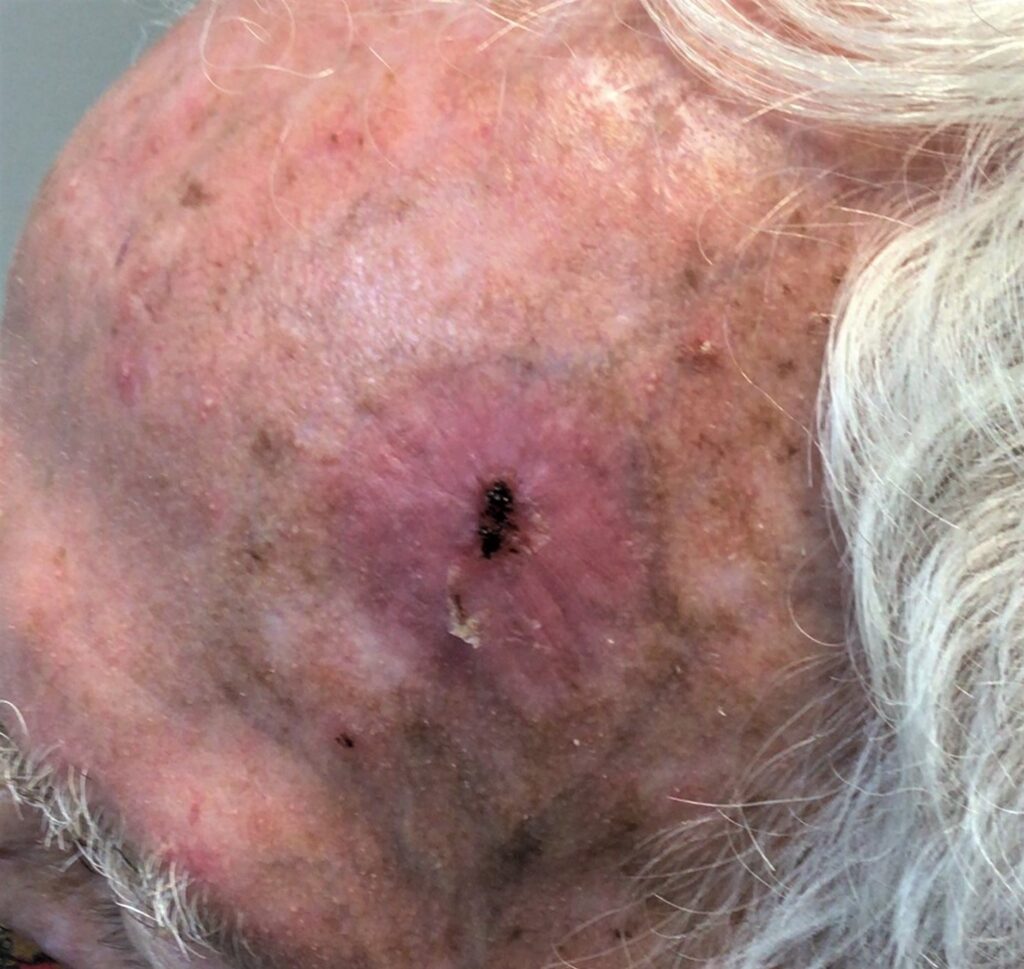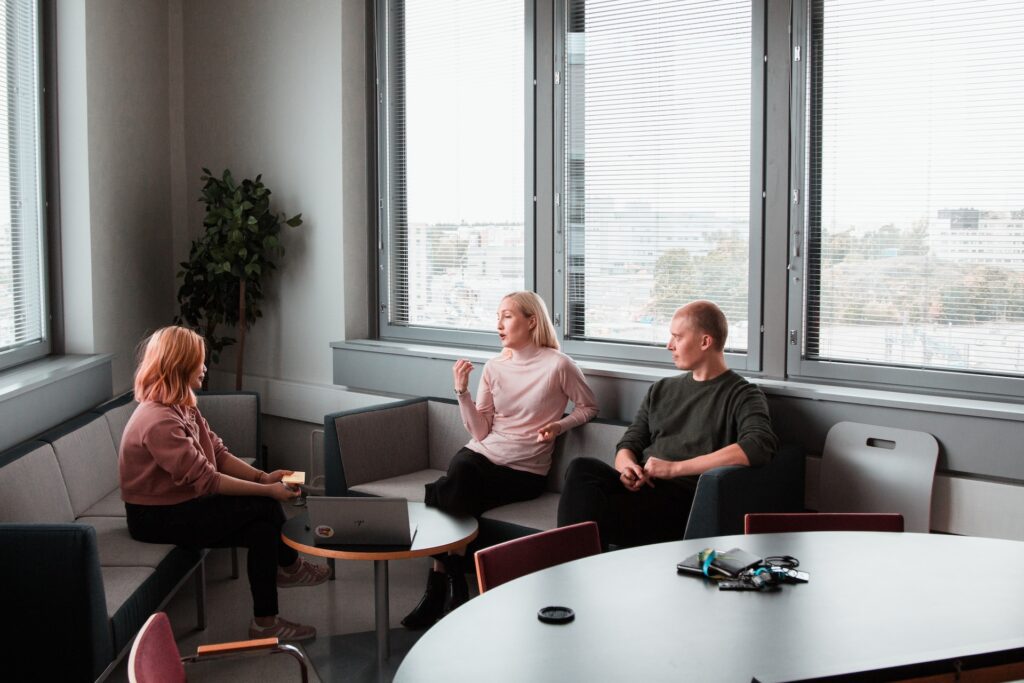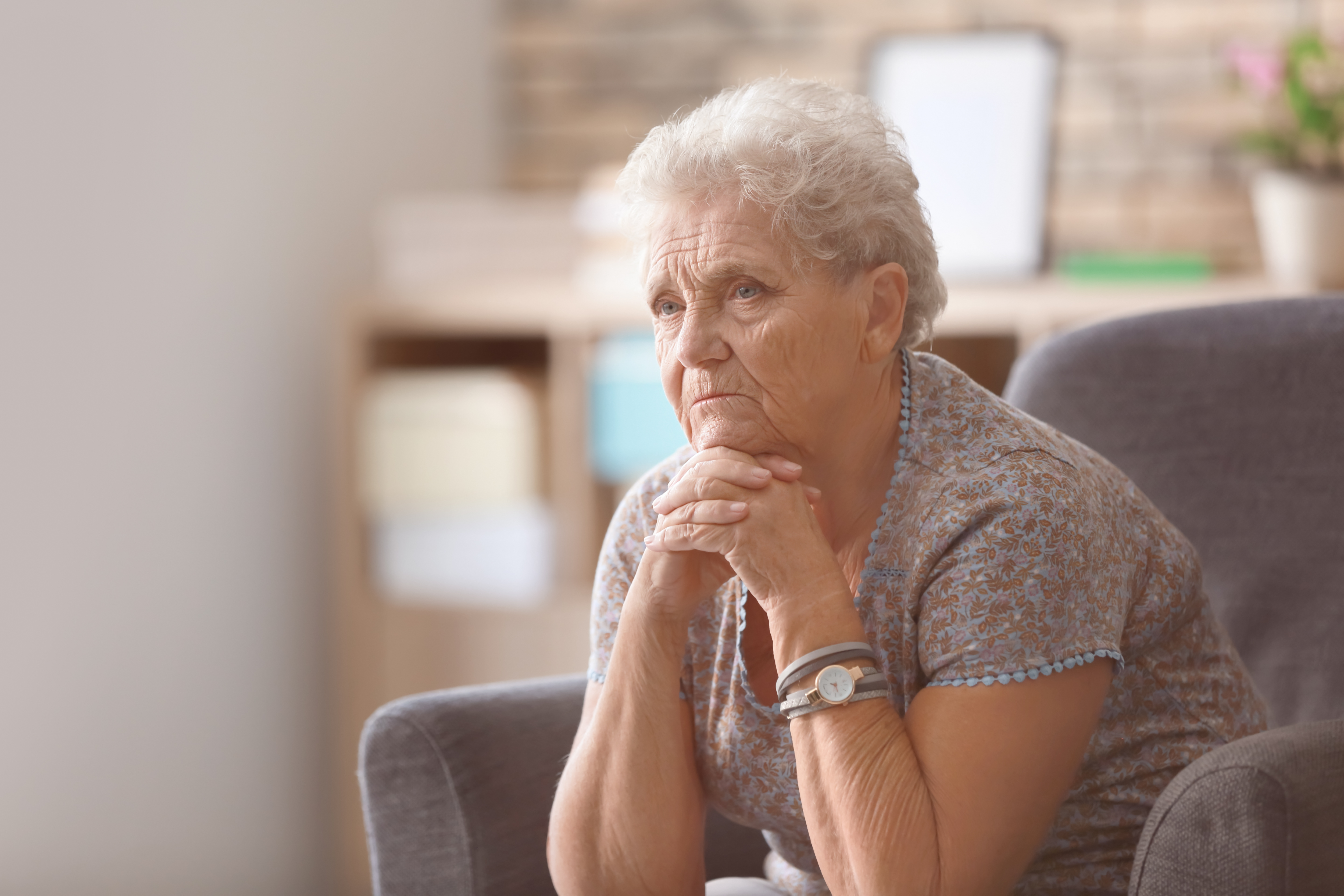
Image-Guided SRT is a surgery-free treatment option for non-melanoma skin cancer, an especially effective alternative to Mohs surgery. As with any medical treatment, it is important to learn all that you can about it and to have all your questions answered. If you or your doctor think that a spot on your skin could be skin cancer, a piece of the skin will be removed and tested. This is called a biopsy. If the biopsy shows basal cell or squamous cell skin cancer, you may choose to have Image-Guided SRT. Image-Guided SRT can cure these two common types of skin cancer. It is not used for people with melanoma skin cancer.
Before the First Image-Guided SRT Treatment Session
The first step in having Image-Guided SRT is the simulation. This is a test-run of an actual treatment session. It is done in the dermatologist’s office. During the simulation, you will:
- Talk about goals and expectations for treatment
- Meet the radiotherapist who will do each Image-Guided SRT treatment
- Learn how many treatment sessions may be needed
- Hear about how X-ray energy will be used to kill the cancer cells
During Each Treatment Session
During each treatment, you will sit or lie back in the chair. The radiotherapist will put a shield over you, like the one you wear at the dentist’s office when you get X-rays. A smaller piece of the shield with a cut-out for the skin cancer will also be put on the area being treated. The arm of the machine is then placed over that cut-out. This radiotherapist steps out of the room and starts the treatment while still monitoring you. Each treatment is pain-free and takes about 15 minutes total.
As the X-ray energy works to kill the cancer cells, the skin may look red. This side effect can be cared for by your doctor and usually goes away within 2 to 6 weeks after treatment ends.
FAQ
Yes. Image-Guided Superficial Radiation Therapy (IGSRT) is a proven, non-surgical treatment for common skin cancers like basal cell carcinoma and squamous cell carcinoma. It uses ultrasound imaging to precisely target cancer cells and deliver low-dose radiation to the affected area, while sparing surrounding healthy tissue. Many patients experience complete resolution of their skin cancer without surgery, pain, or scarring.
Image-Guided Superficial Radiation Therapy (IGSRT) typically causes mild to moderate side effects localized to the treated area. These may include skin irritation, redness, thinning, or breakdown. Such effects usually resolve within 2 to 6 weeks after treatment concludes. Some patients might experience changes in skin pigmentation (darkening or lightening). Hair loss will occur in the treatment area. When the nose is treated, dryness in the nasal passages may potentially lead to nosebleeds, usually manageable with saline sprays or moisturizing ointments. Rarely, a non-healing skin ulcer or, decades later, a new cancer in the treated area may occur. Your healthcare provider will monitor your skin throughout the treatment and offer guidance to manage any side effects.
Treatment with IGSRT typically involves 18 to 25 short treatment sessions (about 10 minutes each) over the course of several weeks.. The exact number of treatments depends on the size, location, and type of skin cancer being treated, as determined by your doctor.
Yes. IGSRT is often a preferred option for elderly patients or those with underlying health conditions who may not be ideal candidates for surgery. Since the treatment is surgery-free, painless, and doesn’t require anesthesia or recovery time, it offers a gentle alternative to surgical procedures like Mohs surgery — making it especially suitable for seniors.
Image-Guided SRT is a simple process. Understanding the steps and having your questions answered can help you feel more comfortable during treatment. For more information, contact us at 855-936-4411.

